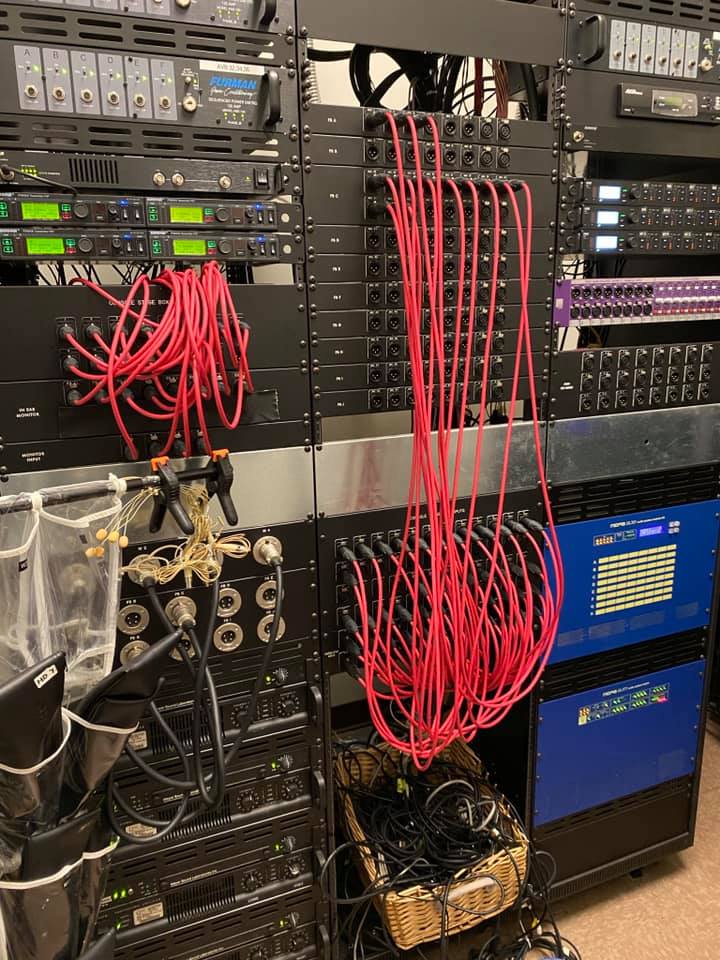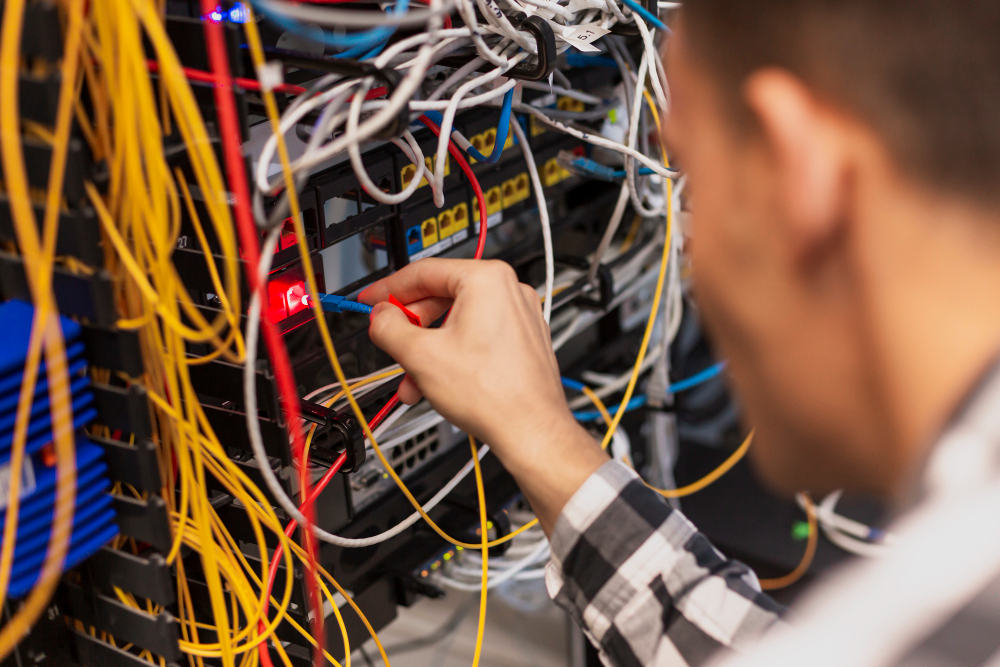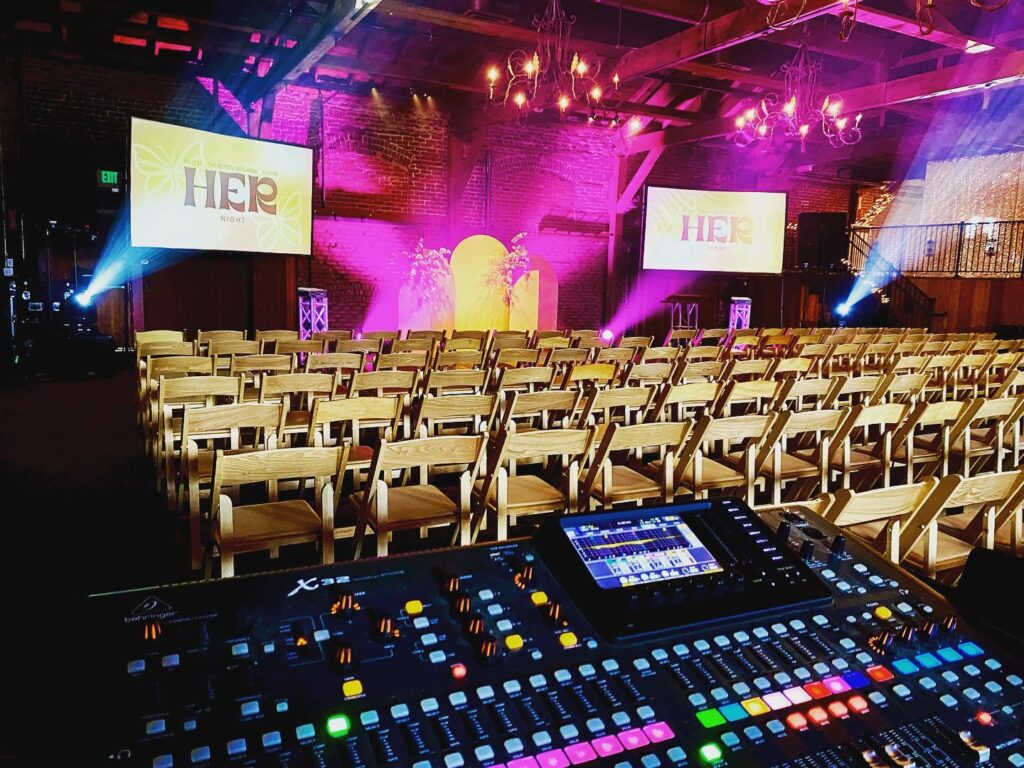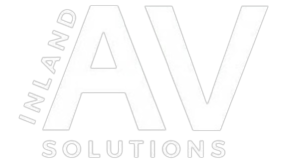Poor audio quality and grainy video during conference calls frustrate your team and significantly affect your commercial audio visual communication. These commercial audio visual technical issues also reduce collaboration effectiveness. Technical shortcomings often reveal deeper problems that get pricey for many businesses to fix.

Professional commercial AV installation might seem expensive at first glance. However, choosing cheaper alternatives leads to substantial hidden costs down the line. The industry now has over 350 licensed, trained professionals who deliver high-quality audio and visual experiences. This shows how commercial audio visual solutions need expert implementation. This piece dives into the real price of subpar AV systems. You’ll learn about both direct financial effects and long-term business risks, which will help you make smart decisions about your organization’s audio-visual setup.
The Direct Financial Impact of Subpar Commercial Audio Visual Systems
Poor commercial audio visual systems drain finances well beyond frustrating technical problems. Many businesses don’t realize how deeply these shortcomings hurt their bottom line and create unexpected expenses.
Equipment replacement and emergency repair costs
Companies must scramble to find solutions at premium prices when breakdowns happen. New AV equipment needs more than just hardware purchases – suitable components must be found, deliveries might face supply chain delays, and everything needs to work with existing systems.
Service agreements from trusted commercial audio visual companies can reduce these costs. Regular maintenance visits help spot and fix faulty components before they become major headaches. Organizations risk both stress and huge repair bills without this proactive approach.

Increased energy consumption and utility bills
Bad commercial AV installation creates systems that waste power. The biggest power users in any AV setup are displays, projectors, audio amplifiers, and video servers. U.S. commercial electricity rates have nearly doubled in the last two decades from 7.5 cents to 13 cents per kWh nationally.
The Bureau of Labor Statistics shows electricity prices rose faster than inflation in the last 12 months. Poorly maintained equipment uses more power than needed and drives up utility costs. Energy-efficient commercial audio visual solutions help cut operating costs and environmental damage.
Premature system obsolescence
Low-quality commercial audio video systems often deliver poor sound and video. Subpar components, too many cables, and limited device compatibility make these systems break down sooner. AV system components usually become outdated within two to five years, and about 15% disappear from the market each year.
Old equipment breaks down more often and causes disruptions during key events. Replacement parts become harder to find and more expensive as systems age, which creates an endless cycle of rising costs.
Smart businesses think about both initial installation quality and long-term maintenance strategy for their commercial audio visual systems. This approach helps maximize investment and avoids the hidden costs of cheaper solutions.
Hidden Productivity Costs That Affect Your Bottom Line
Poor commercial audio-visual systems quietly drain your organization’s productivity and operational efficiency beyond visible expenses. These hidden costs create ripple effects throughout business operations that exceed direct financial impacts.
Meeting delays and technical difficulties
Technical glitches waste precious meeting time and reduce productivity in your organization. Your bottom line takes a hit when employees spend an average of 5 hours weekly in meetings with even minor audio-video disruptions. Studies show common AV problems include audio feedback (45%), microphone malfunctions (40%), and audio dropouts (35%).

Participants must work harder just to understand what others say during these disruptions. Your brain works 35% harder to process information with poor audio quality. This leads to cognitive overload, and people lose focus on their actual work tasks.
Employee frustration and time wastage
Your workforce bears the emotional burden of subpar commercial audio-visual systems. Modern workers (95%) say their concentration suffers from audio problems. The affected employees react differently – 35% feel frustrated or irritated, 25% experience stress, and 15% feel embarrassed when audio quality fails.
- Increased cortisol (stress hormone) release
- Higher risk of stress-related conditions
- Decreased engagement and participation
U.S. industries lose over $300 billion yearly from absenteeism, turnover, reduced productivity, and related expenses due to these problems.
Missed collaboration opportunities
Teams need clear communication to work together effectively. Subpar commercial audio video systems create barriers between remote and office teams. People focus on fixing technical problems instead of creative solutions when meetings have technical issues.
Teams innovate less as collaboration suffers. Members hesitate to share ideas, especially in hybrid setups where remote workers struggle to feel included. Quality commercial audio-visual installation can prevent these missed opportunities for knowledge sharing and collaborative innovation – arguably the biggest hidden cost.
Long-term Business Consequences of Poor AV Installation
First impressions leave a lasting mark in business. Your commercial audio visual systems are vital in shaping how clients notice your organization. Poor AV installations create immediate problems and can damage your business prospects for years.
Client perception and lost business opportunities
Subpar commercial audio visual equipment directly shapes your business’s credibility in clients’ eyes. Research shows poor audio quality affects your message’s impact and your audience’s perception of you as a speaker. You appear less trustworthy, less intelligent, and less likable. Sound quality ranks as the top factor that affects customer experiences.
Picture inviting top clients or shareholders to a meeting. They sit through grainy video, echoey audio, or system failures. These experiences create lasting negative impressions about your company’s professionalism and attention to detail. Technical mishaps turn what should be smooth communication channels into major roadblocks.

Word of a disastrous AV experience spreads faster in today’s interconnected business environment. This can harm your reputation and erode trust in your organization’s capabilities.
Competitive disadvantage in your industry
Businesses with outdated or unreliable commercial audio visual solutions lag behind competitors who invest in quality systems. Proper commercial av installation gives you a clear edge through better internal and external communications.
- Complete projects faster through better collaboration
- Present a more professional image to clients and partners
- Adapt more easily to industry changes and evolving user priorities
Many businesses see commercial audio visual technology as just another expense. Industry leaders recognize it as a strategic investment in overall communication strategy that drives efficiency, credibility, and long-term growth.
Lack of foresight in your commercial audio visual planning leads to budget overruns and missed AV objectives. This results in expensive mistakes that put you at a major disadvantage compared to competitors who made quality their priority from day one.
How to Calculate the True ROI of Quality Commercial Audio Visual Solutions
Looking beyond the price tag helps assess detailed returns over time when you evaluate your commercial audio visual investment. Professional integrators help build realistic budgets that match your organization’s specific needs.
Original investment vs. lifetime value analysis
Customer Lifetime Value (LTV) plays a vital role in calculating the true ROI of commercial audio visual solutions. This metric shows the total revenue your AV system generates throughout its lifespan—not just from the installation.
- Original purchase and installation costs
- Expected operational lifespan (typically 5-7 years for quality systems)
- Ongoing revenue or cost savings generated
Technology investments should deliver a healthy LTV:CAC (Customer Acquisition Cost) ratio of approximately 3:1, according to industry experts. Your commercial audio visual system should generate three times more value than its original cost over its lifetime to prove a sound investment.
Productivity gains from reliable systems
Measurable productivity improvements come from reliable commercial audio visual systems. Companies that implement quality AV solutions see a 47% reduction in travel expenses through secure telecommunication systems. Small and medium businesses save $120,000 monthly on average after switching to VOIP systems integrated with professional AV setups.

Professional audio visual solutions help 55% of businesses become more collaborative through well-designed commercial av installation. Teams complete projects faster, make better decisions, and spend less time in meetings.
Maintenance and support considerations
System ROI maximization depends on regular maintenance. Planned upkeep and timely updates reduce system breakdowns by 30% through structured maintenance schedules.
Support packages from professionals include → Technical assistance, warranty protection, and free upgrades come with monthly subscription support plans starting at $50. The investment proves worthwhile—preventative maintenance spots problems before disruptions occur. This keeps system uptime high and maximizes return on investment.

Professional commercial audio visual companies ensure your systems deliver value throughout their operational lifecycle with ongoing support.
Conclusion
Quality commercial audio visual systems mean much more than a business expense. Smart businesses see AV solutions as valuable investments that directly boost their profits, not just as costs.
Poor AV systems waste money through emergency fixes and high power bills. Equipment breaks down too soon. These costs add up fast when you consider lost work time, missed team connections, and damaged client trust. Of course, trying to save money upfront with cheap audio visual equipment costs way more in the long run.
Professional commercial AV solutions bring real value through better teamwork and less system downtime. Your business image improves too. Quality systems save money with fewer repairs, lower energy bills, and better team output.
Your choice between professional and low-quality AV systems shapes every part of your business. Inland AV Solutions‘ experienced team makes sure your audio visual setup helps your organization succeed. They build reliable, custom solutions that give you the best value while avoiding the hidden expenses of cheaper systems.
Commercial Audio Visual FAQs
How do poor commercial AV systems impact business productivity?
Poor AV systems can lead to meeting delays, technical difficulties, and employee frustration. This results in wasted time, decreased focus, and missed collaboration opportunities, ultimately affecting the company’s bottom line.
What are the financial consequences of subpar audio-visual equipment?
Subpar AV equipment can lead to increased costs due to frequent repairs, higher energy consumption, and premature system obsolescence. Additionally, businesses may face unexpected expenses from emergency repairs and the need for early equipment replacement.
How does the quality of AV systems affect client perception?
The quality of your AV systems directly influences how clients perceive your business. Poor audio and video quality can make you seem less professional, trustworthy, and competent, potentially leading to lost business opportunities and damage to your company’s reputation.
What factors should be considered when calculating the ROI of AV solutions?
When calculating ROI, consider the initial investment, lifetime value analysis, productivity gains from reliable systems, and ongoing maintenance and support costs. A good AV system should deliver at least three times more value than its initial cost over its lifetime.
How can businesses ensure they’re making the right investment in AV technology?
To make the right investment, businesses should work with experienced AV professionals who can provide customized solutions tailored to their specific needs. Regular maintenance, energy-efficient equipment, and considering long-term benefits rather than just upfront costs are also crucial factors in maximizing ROI.
